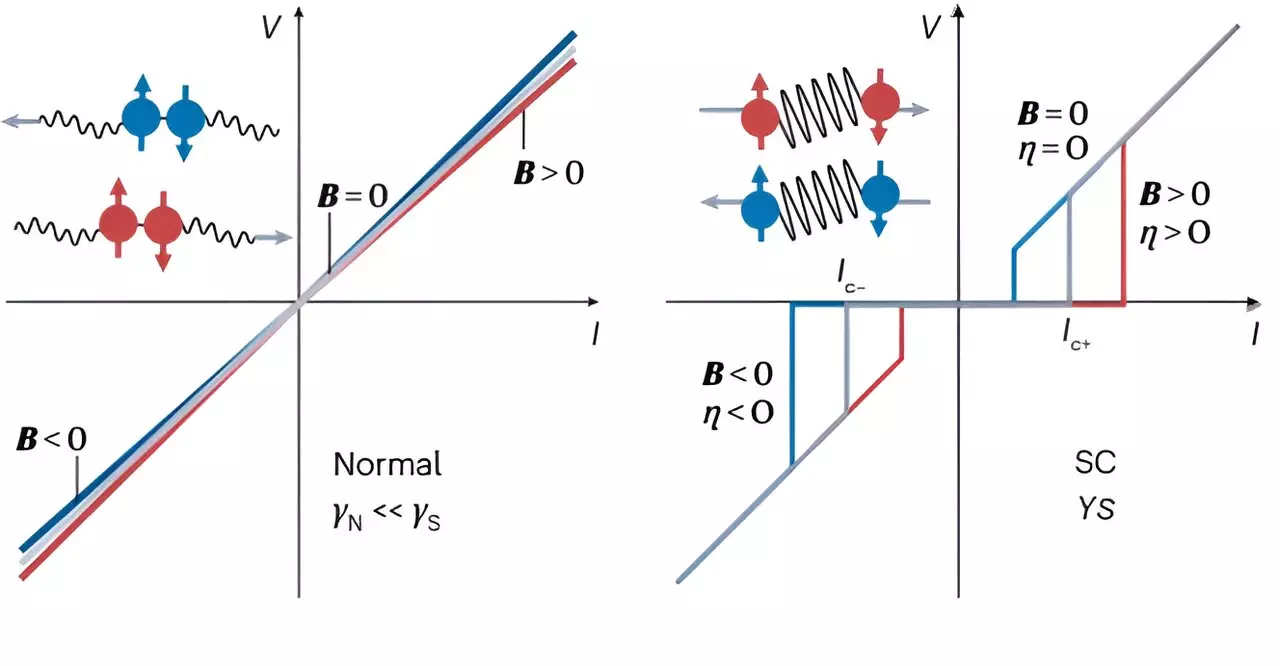The field of quantum condensed-matter physics has been taken by storm with the recent discovery of the superconducting diode effect. This groundbreaking phenomenon allows for dissipationless supercurrent to flow in only one direction, opening up new possibilities for superconducting circuits. In this article, we will delve into the world of superconductors and explore the potential applications of this non-dissipative circuit element in quantum computing and other quantum technologies.
Superconductors are known for their zero resistivity and perfect diamagnetic behavior, which enable dissipationless transport and magnetic levitation. The conventional understanding of superconductivity is well-explained by the Bardeen-Cooper-Schrieffer (BCS) theory proposed in 1957. According to this theory, electrons in superconductors form pairs, called Cooper pairs, and the flow of these pairs is referred to as a supercurrent.
In addition to conventional superconductivity, there exists a realm of unconventional superconductivity where superconducting order can be stabilized in functional materials with unique properties. Examples of unconventional superconductors include magnetic superconductors, ferroelectric superconductors, and helical or chiral topological superconductors. These materials offer exciting possibilities for the development of novel quantum devices.
Recent advancements in the field have led to the observation of nonreciprocal supercurrent transport, resulting in the discovery of the superconducting diode effect (SDE). Researchers have observed SDE in various types of superconducting materials, such as single crystals, thin films, heterostructures, nanowires, and Josephson junctions. This wide range of materials and designs highlights the versatility and potential of superconducting diodes in quantum technologies.
One of the remarkable features of the superconducting diode effect is its tunability. Unlike conventional semiconducting diodes, the efficiency of SDE can be adjusted through various external stimuli, including temperature, magnetic field, gating, and device design. Furthermore, intrinsic quantum mechanical functionalities, such as Berry phase, band topology, and spin-orbit interaction, also play a role in controlling the direction of supercurrent flow.
The gate-tunable diode functionalities of superconducting structures open up novel possibilities for superconducting and semiconducting-superconducting hybrid technologies. The ability to control the flow of supercurrent with a magnetic field or a gate electric field paves the way for innovative device applications. The superconducting diode effect has already been observed in various structures made from conventional superconductors, ferroelectric superconductors, twisted few-layer graphene, van der Waals heterostructures, and helical or chiral topological superconductors. This wide range of materials and architectures demonstrates the vast potential and versatility of superconducting diodes in quantum technologies.
The superconducting diode effect has opened up a new frontier in the field of quantum condensed-matter physics. This intriguing phenomenon allows for dissipationless supercurrent to flow in only one direction, enabling the development of ultra-low energy superconducting and semiconducting-superconducting hybrid quantum devices. As researchers continue to explore the theoretical and experimental aspects of the superconducting diode effect, we can expect to see further advancements in the realm of quantum technologies. The journey towards harnessing the full potential of superconducting diodes has just begun, and the possibilities are truly limitless.


Leave a Reply